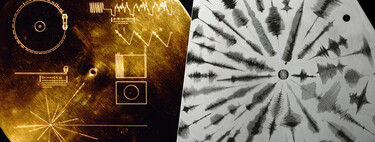A powerful SpaceX Falcon Heavy rocket has used up every last drop of fuel it had inside to launch Europa Clipper, one of NASA’s most important missions for the next decade.
A huge probe. Europa Clipper is the largest spacecraft NASA has ever built for a planetary mission. It can only be compared in this area with the ESA probe JUICE, which pursues the same destiny. It weighs six tons (3,241 kilograms plus fuel) and has 24 engines. Its deployed solar panels measure a whopping 90 square meters.
The size, weight and destination (Europe, Jupiter’s icy moon) pushed NASA to hire a disposable Falcon Heavy rocket for the launch. The SpaceX launcher’s side boosters, which had flown six times each, fell into the ocean instead of landing after an especially long climb.
An intriguing destination. Europa Clipper will take five years to reach Europa, Jupiter’s moon that hides an ocean of salt water under the thick layer of ice on its surface. Astronomers think it could be larger than all of Earth’s oceans combined, and one of the best places in the solar system (if not the best) to look for extraterrestrial life.
Europa Clipper will make about 50 flybys of Europa once it reaches Jupiter in 2030, assisted by the gravity of Mars in 2025 and of Earth in 2026 after its insertion into orbit this Monday by the Falcon Heavy.
An important mission. With a budget of $5.2 billion, Europa Clipper is NASA’s most important planetary exploration mission for this decade: the first that will deeply investigate the moon Europa and its potential habitability.
Since the 1950s, astronomers have had signs of water ice on Europa, but the discovery of its subsurface ocean and the possibility of microbial life existing within it highlighted the importance of a mission to Europa. It will be complemented by results from the European spacecraft JUICE, which is also heading to the icy moons of Jupiter.
Years of delays. Europa Clipper has been on the table for more than a decade (and more than 20 yearsif we take into account the predecessor missions that never saw the light). In 2013, it received funding from NASA for instrument development. In 2015, the nine instruments that would fly on the spacecraft were selected.
From 2015 onwards, Europa Clipper went through several design phases which included a rocket change. Initially it was going to be launched with NASA’s SLS, but the SpaceX Falcon Heavy was chosen due to availability, cost, vibrations at launch and above all to avoid having to pass through Venus, whose temperature could have affected the instruments of the probe.
A last minute joke. Hurricane Milton caused the mission’s latest delay: from October 10 to the 14th. But a few weeks ago, it was unclear that Europa Clipper would launch. NASA discovered a defect in the 900 MOSFET transistors used to control all critical systems and instruments of the probe.
Basically, the transistors were susceptible to failure in Europe’s radioactive environment. The solution, implemented in record time, was to install a “canary in the mine” type unit on the ship that monitors the health of the MOSFETs, alerting the control team on Earth of possible imminent failures, which would give rise to possible strategies. mitigation.
Good luck, Europa Clipper. The spacecraft will explore Europa with high-resolution cameras (EIS and E-THEMIS), spectrometers (Europa-UVS and MISE), magnetometers (ECM and PIMS), an ice-penetrating radar (REASON) and chemical analyzers (MASPEX and SUDA ).
The main objective of the mission will be to confirm or rule out the habitability of another world in our solar system. Although it will not land, it will help, together with ESA’s JUICE, in the selection of candidate sites for the difficult landing of future probes.
Images | NASA, SpaceX
In Xataka | Thinking that we are alone in the universe is arrogant. The question is why the aliens haven’t contacted us yet















Add Comment